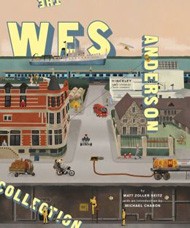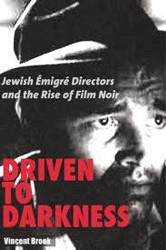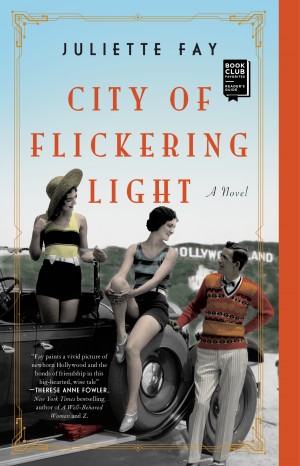Two visually engaging well-researched volumes that treat aspects of popular culture that have used subjects which influence public perception of Jews and their historical presence.
Cinema Judaica analyzes the films made in the decade surrounding World War II: the period prior to the U.S. entry into the conflict, the war years, and the immediate post-war years. Several factors influenced production. With the start of Nazi expansionist activity in Europe serious anti-Interventionist movements arose in the U.S. along with support and admiration for Hitler. The movie industry depended on revenues from distribution of films in Europe, so that when the Nazis demanded that they get rid of all Jewish employees in their German offices all but two studios complied. The author describes the unwelcoming atmosphere when some Hollywood directors wanted to make films that would inform the people of the dangers of the Nazi policies.
The motion picture industry’s self censorship boards (Production Code Administration – PCA) and the lack of constitutional protection of “free speech” negatively influenced Hollywood’s resolve to produce films that might not pass the code, which included disallowing “films that would cause affront to foreign states.” Only after the revelation of Nazi espionage in the U.S. could Warner Brothers film “Confessions of a Nazi Spy,” released in 1938, expect to pass the code. Other films released during this period include “Espionage Agent” and “Hitler, Beast of Berlin,” the latter being distributed without a PCA seal. Some films, such as “Pastor Hall,” about the Nazification of German Protestant churches, was a British film that was delayed in production while Neville Chamberlin was prime minister and later rushed into production by Winston Churchill. Because of its violent scenes in the concentration camps with identifiably Jewish victims, it would not have passed the PCA code in the U.S. had not Eleanor Roosevelt and her son James endorsed it. “World in Flames,” “The Battle of London,” and Tyrone Power in “A Yank in the R.A.F.,” released in 1940, prepared American audiences for their probable involvement.
Once the U.S. entered the war, the movie industry became very active in producing documentaries and films that were patriotic and featured heroic action in defeating the evils of Nazism. “Hitler’s Children,” “Women in War,” and “Hitler’s Madman” (about the assassination of Reinhard Heydrich, the most virulently anti-Semitic of Hitler’s S.S. officers) were films that kept the public informed about the evil ideology on which the German war machine was based.
“Mr. Emmanuel,” based on a 1939 novel and featuring a well-known British star, was released in England and the U.S. late into the war and is, according to Sutak, the first of what would later be called a Holocaust film because of its Jewish protagonist. Sutak also points out that when Auschwitz was liberated by the Russians in 1945 the newsreel footage of the camp was so horrific that it made the wartime films seem inadequate and irrelevant.
The author provides insights into the filmmaking of the immediate post-war period, pointing out that some films were traditional Hollywood stories that happened to include some wartime documentary footage — films that became known as belonging to a genre of “World War II noir.” Other films began to deal with anti-Semitism, the best-known being “Gentleman’s Agreement.” Most of the early Holocaust films were produced in Europe.
More than fifty films are detailed, making this an excellent reference volume for anyone interested in media of the period. Samples of movie posters and lobby cards (some very rare) that were designed to advertise to different audiences are reproduced in color throughout the book. This work grew out of two poster exhibits that the author produced for Hebrew Union College – Jewish Institute of Religion in 2007 and 2008. While other books have covered the history of Jews and films, this is specifically focused on the films of the war with the graphics serving as dramatic emphasis of the record.
Hatemail: Anti-Semitism On Picture Postcards is a study of the postcards depicting stereotypical images of the Jew as a vile personage in the “golden age” of postcards that is generally designated as from 1890 to 1920. Postcards began to be produced in 1870 but not until the Paris Exhibition that coincided with the opening of the Eiffel Tower in 1889 did postcards become a hugely popular form of communication. Photography was developing concurrently and many postcard publishers commissioned original work from artists and photographers. Political satire cartoons reproduced on postcards became a popular genre, often accompanied by texts of diatribe toward Jews and everything connected to Jews. (The image was not left to speak for itself.) According to the author the more than 250 postcards reproduced in color in this volume are only a small sample of the thousands that were printed. They were produced in many different countries. The earliest use of anti-Semitic drawings and cartoons were produced in France to support the mission of the anti-Dreyfusards in their newspapers and broadsides to find Captain Alfred Dreyfus guilty of treason against France. Postcards from the period depict Dreyfus as a large-nosed money-hungry criminal revealing secrets to the German enemy.
Each country’s cartoons reflected its particular paranoia — the more virulent depicting them as filthy animals, Jews in control of the world, greedy and cheating. Many focused on physical features — large noses, large hands, and ungraceful bodies. Some postcards mocked the prohibition against eating pork. Many of the postcards in the collection contain the personal messages of the sender. Since most of the messages do not contain any reference to the postcard’s image, one can only speculate on why the sender selected the particular card.
The book also includes a chapter on “The Little Cohn” (Der Kleine Cohn) an anti-Semitic song of 1902 about a short deformed Jew which was so popular that postcards were produced about it; the spa towns of Karlsbad and Marienbad, part of German Sudetenland that had significant Jewish tourists engendering anti-Semitic postcards depicting their innate physical and cultural inferiority. Concluding with chapters on Nazi-era and anti-Israel postcards the book’s effect is that anti-Semitic slurs have been endemic to so-called Western civilization and that the era of the postcard (which Aizenberg notes has been replaced by forums, blogs, and social websites) these postcards — the text-messages of today — prove that it was acceptable to express such sentiments openly and to send them through the mail.
Both Cinema Judaica and Hatemail are recommended for both personal and reference collections. The images reproduced in both volumes are of the highest quality.
Related Content:
- Hollywood and Hitler, 1933 – 1939 by Thomas Doherty
- The American Jewish Story through Cinema by Eric A. Goldman
- The New Jew in Film: Exploring Jewishness and Judaism in Contemporary Cinema by Dr. Nathan Abrams




